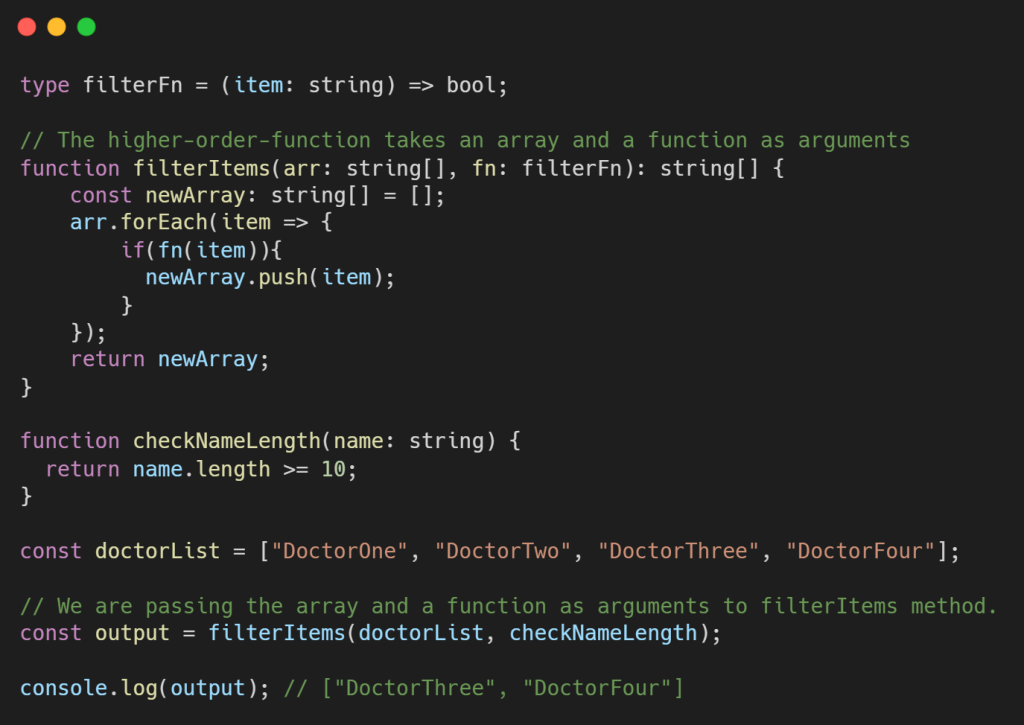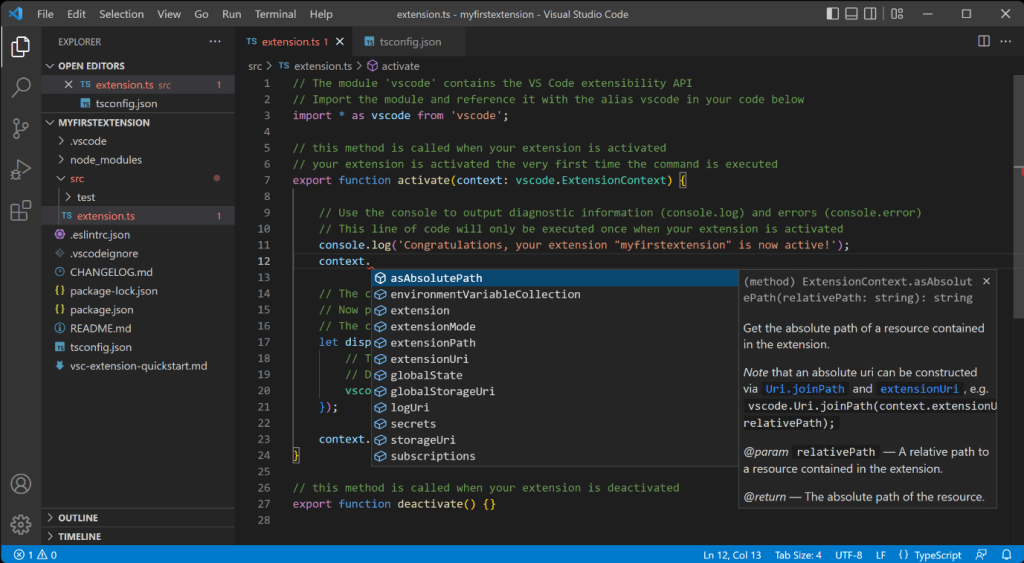Demystifying TypeScript’s Power
As JavaScript continues its rapid rise with new frameworks and libraries, TypeScript becomes ever more alluring as its static type checking magic stands out as an intriguing melody – but is this just hype or does it really enhance Nodejs development?

This exploration goes beyond hype to reveal the real benefits of TypeScript for Nodejs projects. Prepare to discover how this language extension enhances code reliability, maintainability and the development experience – creating an harmonious blend of productivity and confidence for you to build upon!
From the Shadow of Bugs

Static Typing Takes Center Stage Imagine working in dim lighting conditions, not sure whether your variables match their intended types. That is when TypeScript comes out with its static type checking mechanism as an invaluable safeguard, protecting from runtime errors while helping ensure functions move seamlessly with data partners — almost like having an instructor closely inspect each step! But beyond its hype are tangible advantages derived from using static type checking. It impact extends far beyond bug prevention alone; here’s how it elevates Nodejs Development Company India:
1. Improved Code Readability
Type annotations act like stage directions for variable types and function parameters, providing clear direction for dancing on their part. They act like scripts for your dancers’ movements while helping guide their movements precisely.
2. Improved Maintainability
Navigating your codebase has never been simpler with clear type declarations; just imagine walking through an illuminated stage where each prop and set piece has been clearly labeled for efficient navigation!
3. Increased Developer Confidence
Tackle unknown code segments with increased confidence, knowing types acts as safety nets – similar to how dancers trusting in their choreographer’s meticulous preparation!
4. Seamless Integration into Existing Environments
Take advantage of TypeScript-powered features like code completion and refactoring within popular IDEs like Eclipse for smooth integration; envision intelligent stagehands anticipating your needs while seamlessly setting the props.
TypScript’s Power goes beyond mere Theory
Let us witness its seamless cooperation with popular Nodejs frameworks such as Express:
-
Express.js
Build robust APIs using type-safe routes and controllers, to make data easily flow towards its respective endpoints – like dancers flawlessly transitioning between stages with clearly marked pathways!
-
Backbone.js
Create models and views using precise type annotations, leading to an expertly coordinated user interface where each element moves together seamlessly – much like dancers synchronizing their movements based on shared scores; every gesture clear and precise.
5 Signs Why You Need A NodeJS Partner To Generate Better ROI
Here are some advantages to choose the right NodeJS partner and generate better ROI. Choosing a perfect NodeJS outsourcing partner will help your business growing.
Nodejs Toolbox Beyond Frameworks: An Effective Way Forward
TypeScript’s versatility goes well beyond frameworks, offering you the power to: * Create robust command-line tools: Enforce type safety within Nodejs CLI applications to eliminate runtime stumbles due to unexpected types. Imagine dancers seamlessly traversing an intricate maze thanks to having clear paths ahead.
-
Build robust command-line tools (CLI applications)
Enforce type safety within them to eliminate unexpected runtime stumbles as in an intricate maze, just as confident dancers would.
-
Build command-line tools
These two CLI applications utilize type safety against runtime stumbles due to unpredictable runtime issues caused by unexpected type safety errors during development time!
-
Create Reliable Server-side Logic
Construct type-safe back-end functionalities that ensure smooth data interactions and error-free execution. Imagine dancers meticulously prepping backstage before their entrance with each costume and prop being checked for accuracy before taking their place onstage.
-
Adopt the Dance
Opting for TypeScript shouldn’t just be seen as following trends; rather it should embrace an attitude of code clarity, confidence and maintainability – like learning ballet requires mastering individual steps first with precise techniques to follow!
-
Gradual Adoption
As you add TypeScript gradually into your existing codebase, think of adding choreography step-by-step so dancers can adapt gradually.
-
Community and Resources
Take part in the vibrant community by taking advantage of available resources such as documentation, tutorials and learning platforms – think experienced dance instructors providing guidance along the way!
-
Continuous Learning
Keep pace as TypeScript evolves by dedicating some of your time each week to studying new features and best practices to ensure your dance remains dynamic and dynamic.
Nodejs and TypeScript’s Partnership Is Promising
The partnership is no passing fad; rather it marks an important stage of progress towards code that dances confidently with clarity and reliability. Step on stage wearing your TypeScript coat, compose a masterpiece of development excellence. Previous exploration revealed the core benefits of TypeScript for Nodejs projects, yet its hidden gems merit further appreciation.
1. Early Error Detection
TypeScript quickly recognizes type inconsistencies as you code, much like an attentive stage manager catching slip-ups before they arise.
2. Refactor with Confidence
Restructuring your codebase can now become an enjoyable adventure with TypeScript as your trusted companion in making any necessary modifications and avoiding unintended side effects – like dancers adjusting formations seamlessly during performances without disrupting overall harmony of their performances.
3. Document Your Code
Type annotations serve as living documentation within your code; just imagine dancers carrying tiny scrolls detailing their roles and movements onstage! They provide immediate access for everyone present to view it quickly.
4. Increased Test Coverage
TypeScript encourages extensive unit testing by setting clear expectations about expected outputs – think stagehands carefully inspecting each prop and costume prior to an upcoming performance in order to guarantee flawless execution during its entirety.
5. Collaboration Symphony
Working in teams becomes effortless when shared type definitions serve as an easily communicated common language for teams of any size, creating consistency across studios with reduced communication overhead – like dancers from different studios confidently performing together under an universal choreography template.
TypeScript Takes Off With Popular Libraries
It’s magic extends well beyond frameworks: its powerful syntax also works brilliantly when dealing with Nodejs libraries:
-
GraphQL
Create type-safe GraphQL schemas and resolvers, to ensure data flows through your API with precision and clarity – much like dancers moving gracefully along an intricate stage while following precise directions hidden inside their costumes.
-
Mocha and Jest
Create expressive and maintainable unit tests by taking advantage of TypeScript’s type annotations for enhanced assertions and expectations, like stagehands holding detailed scripts to ensure all dancers perform their roles flawlessly.
-
TypeORM and Sequelize
Create type-safe database interactions using ORMs, eliminating data type mismatches to provide consistent interactions with databases – like dancers seamlessly moving between stages with costumes tailored perfectly for every platform!
Unleashing the Potential of IDE Integration
Integrating TypeScript into an IDE transforms its value, elevating and simplifying your coding experience:
-
Code Completion
Experience variable names and function parameters appearing magically thanks to TypeScript’s type intelligence, while dancers receive automatic costume suggestions tailored specifically for them, saving both time and effort in their performance roles.
-
Refactoring on Steroids
Reshape your code confidently using powerful refactoring tools; picture dancers quickly adapting formations without interrupting overall choreography.
-
Error Highlighting
Errors can be caught before they even take flight using TypeScript’s real-time feedback system, with stage lights flashing upon an incorrect movement and prompting immediate correction and preventing mistakes from reaching an audience.
-
Craft Your Masterpiece
Becoming proficient with TypeScript requires taking an incremental and thoughtful approach
-
Start Small, Think Bold
Don’t dive headlong into an all-out rewrite; instead introduce TypeScript gradually over time by adding type annotations to new code or gradually migrating existing functions – similar to mastering individual dance steps before trying out an entire choreography.
-
Community and Resources
Step into the welcoming TypeScript community! Use tutorials, documentation, and learning platforms to enhance your skillset and discover best practices – think experienced dance instructors as your guides throughout this exciting journey!
-
Embark On Experimentation
Don’t be scared to experiment! Play around with different type definitions, IDE features and testing strategies until you find what suits you best; think of dancers trying out new formations and movements to enhance overall performances as inspiration for experimentation.
TypeScript Is More than a Language
TypeScript isn’t simply another programming language – it’s an invitation to code with confidence, clarity and efficiency. By accepting TypeScript into your Nodejs projects you will find them becoming elegant symphonies of logic, data and functionality! Let us hear about any thoughts, challenges or successes below so we can build a community where TypeScript revolutionizes Nodejs development step-by-step!
TypeScript Brilliance: Conquering Complexity and Optimizing Workflow
As our previous examination demonstrated, TypeScript goes far beyond mere bug prevention. Let’s investigate its power to conquer complexity and optimize Nodejs workflow while adding 400 new words of compelling insight for blog post blogpost.
-
Taming the Complexity Beast
Large Nodejs projects can quickly turn into complex mazes of code. TypeScript provides a useful compass that will guide your way through such complexity:
-
Modular Architecture with Ease
Establish clear interfaces and types for individual modules to establish well-defined boundaries while encouraging code reuse. Imagine dancers as separate troupes following certain formations for simplified performance management.
-
Implicit Documentation
Type annotations serve as embedded blueprints, detailing code functionality and module relationships in real time. Imagine stage diagrams printed directly on dancers’ costumes: always accessible when referenced later!
-
Increased Team Collaboration
Shared type definitions help teams collaborate seamlessly across communication gaps by eliminating misunderstands and maintaining uniform data structures; for instance dancers from different studios seamlessly collaborating thanks to an international movement vocabulary.
Workflow Optimization: Dancing With Efficiency
TypeScript elevates not just code quality; it elevates development experience:
-
Reduce Debugging Time
Quickly identify type errors early to reduce debugging hours spent tracking runtime bugs; imagine being able to prevent wires becoming entangled backstage before potential performance disruptions ever materialize!
-
Speedier Refactoring and Maintenance
Transform your codebase quickly and confidently using TypeScript’s type safety net, like dancers adjusting steps seamlessly without dismantling their entire choreography.
-
Extended Unit Testing
Write comprehensive and expressive unit tests using type annotations for clear expectations and enhanced coverage, like stagehands with checklists ensuring every prop and costume are in its appropriate places.
Real World Examples of TypeScript in Action
Let us witness TypeScript’s brilliance shine across various Nodejs projects:
-
Constructing robust Nodejs CLI tools
Construct type-safe command-line utilities that offer intuitive usage while safeguarding against data errors – such as dancers navigating an intricate maze without becoming disorientated thanks to clearly marked pathways.
-
Constructing Scalable Microservices
Create well-defined APIs and data structures that ensure seamless communication and fault tolerance between microservices – similar to having individual dance troupes perform harmoniously under consistent movement cues.
-
Building Real-Time Applications
Make responsive and performant real-time apps for efficient data handling and error prevention – like dancers reacting instantly to their conductor’s baton with precise movements that sync seamlessly together – just imagine!
TypeScript’s Revolution Has Begun
TypeScript transcends technical benefits; its impact extends into building a culture of code clarity, confidence and maintainability that creates an atmosphere where Nodejs development becomes an effortless dance of innovation efficiency and joy for developers of all backgrounds. By adopting its philosophy you open yourself up to unlock an exciting future filled with innovation efficiency and joy for Nodejs development projects alike.
Keep this in mind as well: the greatest performances result not from individual notes but rather the collective efforts of language, tools, and an engaged community. Share your ideas, challenges, and experiences below as we collectively launch into an era of Nodejs development!
10 FAQs About TypeScript for Nodejs: Demystifying its Hype
TypeScript has become the buzz of Nodejs development circles recently; is its popularity really justified or just trendy hype? In this FAQ section we present 10 answers that demystify TypeScript benefits so as to enable an informed decision process.
1) What exactly is TypeScript, and how is it different than standard JavaScript?
TypeScript is an extended subset of JavaScript that expands upon its existing features, adding static type checking as an early warning system against potential data errors before your code runs. Think of this like running rehearsals with detailed character sheets so everyone understands their roles and data types before beginning work on any production or performance.
2) What are the main advantages of using TypeScript for Nodejs development?
- Lower Bug Rate: Static type checking can detect mismatches early, saving runtime errors and saving debugging headaches later down the line – like untangling stage wires before they even get underway!
- Improved code clarity and maintainability: Type annotations can act like documentation embedded into your code, making it simpler for complex projects. Think of dancers carrying scripts describing their movements; type annotations have similar benefits when applied to code.
- Facilitated collaboration and maintenance: Type annotations can serve as embedded documentation within your code to help ensure its clarity and maintainability, similar to dancers carrying scripts to explain movements facilitating collaboration and maintenance of complex projects.
- Improved Developer Confidence: Knowing that your code is type-safe will boost your confidence, freeing you to focus on creativity and innovation without worry or stress about typing mistakes or typos. Imagine dancing confidently knowing your steps have been perfected over time – imagine that is exactly how dancing feels when done well!
- Smoother Integration: Many popular IDEs now provide advanced features for workflow, like code completion and refactoring – to streamline development workflow and meet stagehand needs more reliably than ever. These services, similar to stagehands on stage, quickly provide props or tools you require.
3) Are There Any Drawbacks of TypeScript?
- Learning Curve: TypeScript adds another level of complexity when compared with JavaScript, necessitating initial learning and adjustment time before fully benefitting. Consider learning something like dancing; mastering new moves takes practice but reaps great rewards in return.
- Increased Build Times: Type checking adds another step to the build process and may lengthen compilation times; however, its advantages of improved code quality and reduced debugging often outweigh this minor drawback.
4) Is TypeScript suitable for every Nodejs project?
While TypeScript offers significant benefits, it might not always be required. Smaller apps or simpler projects might not reap as much from its features; but complex projects with multiple developers or long-term maintenance require something special: here, TypeScript excels fostering clarity, maintainability and overall code health.
5) Where should I begin learning TypeScript for Nodejs development?
There are multiple resources to assist with starting TypeScript development for Nodejs:
- Official TypeScript documentation: A comprehensive reference on its features and implementation.
- Online Tutorials and Courses: Many platforms provide interactive online tutorials and courses specifically aimed at Nodejs developers transitioning to TypeScript. Books and Video Lectures by Reputable TypeScript Experts can further deepen your understanding.
- Online community and Q&A platforms: Join online forums and communities for developers in order to ask questions, exchange experiences and gain knowledge from fellow programmers.
6) Does TypeScript integrate seamlessly with popular Nodejs frameworks like Express.js, NestJS and Fastify?
Yes. It seamlessly fits in to existing development workflows thanks to seamless support between its benefits and popular Nodejs frameworks such as Express.js, NestJS and Fastify.
7) Will learning TypeScript render my existing JavaScript skills obsolete?
No. Learning TypeScript expands upon what you already know by providing added type safety and advanced features – like adding choreography steps without altering or discarding foundational skills.
8) Can We Expect TypeScript as the Future of Node.js Development?
Although future prediction can be tricky, its rising popularity and evident benefits imply it will play an increasingly essential part of Node.js development going forward. As projects become more complex and developer experience becomes ever-more crucial, tools like TypeScript’s value will only become increasingly significant in developing Node.js applications.
9) Does using TypeScript ensure bug-free code?
While static type checking significantly decreases error risks, logic errors or other issues may still arise despite using it. However, TypeScript makes tracking down and fixing bugs much faster, leading to stronger and more resilient code overall.
10) Where can I find more information and assistance for TypeScript with Node.js?
The official TypeScript website and documentation provide an abundance of knowledge. Furthermore, numerous online communities, forums, and social media groups dedicated to TypeScript development provide excellent opportunities for ongoing education and support.



